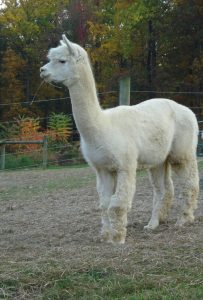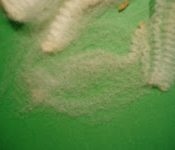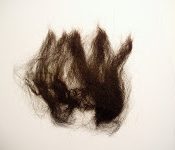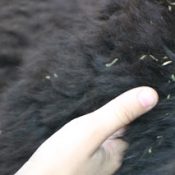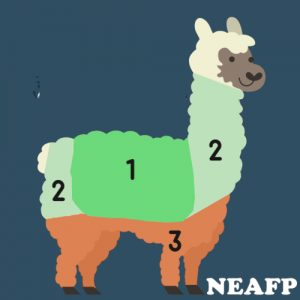 Shearing Day will be here in just a few days. With all this rain it feels more like April Showers instead of May. I sure am hoping for a nice sunny day. It will be so much nicer to store dry fleece instead of wet.
Shearing Day will be here in just a few days. With all this rain it feels more like April Showers instead of May. I sure am hoping for a nice sunny day. It will be so much nicer to store dry fleece instead of wet.
You are invited to come watch the process and even get your hands dirty by sorting fibers. The alpaca Gift shop will be open 1-4 and earlier by request. Just ask for Julie
Why do we shear the alpacas?
Shearing is important to the health of the alpaca. While their fiber keeps them warm through the winter it is too heavy and hot through the summer. The alpacas do not shed the extra fiber so it must be shorn off to keep the alpacas comfortable and healthy.
The alpaca fleece is valuable. It’s a great reason to shear them. Even if you have pet alpacas shearing is a must because of the health issue.
At Quarry Critters Alpaca Ranch we have many volunteers to make this transition move smoothly for all 38 of our alpacas and 4 alpacas that will be returning to get their hair cut.
We have handlers that go into the fields or stalls to collect the alpacas by halter and lead.
The handlers bring the alpacas to the groomer that uses special tools and a vacuum to get the large and small unwanted vegetable matter, dune and dust off the alpacas. The handlers also talk sweetly to the stressed out alpacas, soothingly waiting until it’s their turn on the mat.
All four of the alpacas legs are restrained and the alpaca is gently placed on an athletic mat. Our shearer, Nathan Good, then proceeds to get the alpaca a haircut. Nathan brings his own helper to hold the alpaca’s head. If needed the alpaca will get their teeth and toenails trimmed. Once release, after about 10 minutes, the handler will return the alpaca to the field.
Then the fiber fun begins. During shearing day we sort through the 2nds & 3rd cuts to fit the artisans needs instead of where it comes off the alpaca. The artisitians would like to use 2nds that are as long as your thumb or longer and 3rds then are shorter than the length of your thumb.
Prime coat or 1st fleece comes from the part of the alpaca’s back where it would wear a saddle if it were a horse. The Prime coat is used to make wearables, that you want to be soft next to your skin. We make this available for handle spinners, weavers or crafters. Some of the alpaca fleece is sent off to mini mills to be made into yarn, roving, rug yarn. Some it sent off to the co op to be made into socks, scarves, and other alpaca products. Many of these products, yarn, roving or fleece can be purchased in our Alpaca Gift shop here on the ranch or on our website: www.quarrycrittersalpacas.com
Shearing day specials:
Purchase the whole fleece($2.00 per oz) and receive seconds & thirds at no additional charge.
Spent $65 in the gift shop (this includes the fleece) and receive a free needle felting kit.
Fleeces can be seen on the alpacas on Saturday, May 19, 2018 by appointment and picked up on Sunday, May 20th after it is shorn off the alpaca. Now that’s a fresh fleece.
Please
Visit our Alpaca Gift Shop
Gift Shop Hours are now:
Always Open
Online (www.QuarryCrittersAlpacas.com) or
On the Ranch by appointment 717-359-9989, juliesalpacas@gmail.com
Shop in store
No appointment needed
October – January
Fridays and Saturdays ~~~ 11:00 – 4:00
March-April
No appointment needed
Gift Shop and SCAT collection open on Saturdays 8-12
Gift shop always open during EVENTS
Events:
Shearing Day-
Sunday, May 20, 2018
1:00 – 4:00
Farm Days-
Saturday, September 29, 2018
9:00 – 3:00
SCAT~ — Saturday, March 16, 2019
8:00 – 12:00
Come pick up a free load of SCAT- Alpaca enhanced soil
Along with 10% off gift shop, this day only
717-359-9989
Look forward to seeing all sometime out at the ranch.
Quarry Critters Alpaca Ranch
And Gift Shop
580 Basehoar Rd.
Littlestown, PA 17345
www.QuarryCrittersAlpacas.com
juliesalpacas@gmail.com
davidsalpacas@gmail.com
717-359-9989

